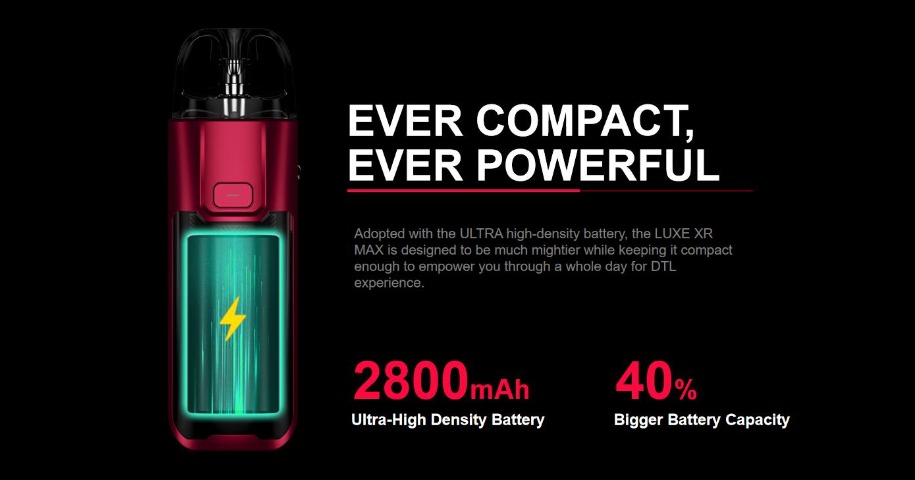health
The Rise of Eco-Friendly Cleaning Products in the US

The Rise of Eco-Friendly Cleaning Products in the US
In today’s rapidly changing world, sustainability has become a critical focus for both individuals and businesses. The quest for reducing environmental impact has led to the rise of eco-friendly products designed to foster a more sustainable lifestyle. These products not only help reduce carbon footprints but also contribute to a healthier living environment. This article explores various eco-friendly products available for a sustainable home, analyzes their benefits, and provides a comparative overview to help consumers make informed choices.

Pexels.com
What Makes a Product Eco-Friendly?
An eco-friendly product is designed to minimize its impact on the environment throughout its lifecycle. This includes considerations for production, usage, and disposal. Key attributes of eco-friendly products include:
- Sustainable Materials: Products made from renewable resources or recycled materials.
- Energy Efficiency: Items that use less energy compared to their conventional counterparts.
- Durability: Products designed to last longer, reducing the need for frequent replacements.
- Biodegradability: Items that break down naturally without harming the environment.
- Low Toxicity: Products free from harmful chemicals that can pollute indoor air quality.
Categories of Eco-Friendly Products
- Energy-Efficient Appliances
Description: Energy-efficient appliances consume less power, leading to reduced energy bills and lower greenhouse gas emissions. Examples include LED lighting, Energy Star-rated refrigerators, and smart thermostats.
Benefits:
- Reduced Energy Consumption: Lower electricity use decreases overall energy demand.
- Cost Savings: Decreased utility bills from lower energy consumption.
- Longer Lifespan: Often built with superior technology that extends their functional life.
- Sustainable Furniture
Description: Furniture made from sustainable materials such as reclaimed wood, bamboo, or recycled metal. This category also includes items produced using environmentally responsible methods.
Benefits:
- Resource Conservation: Using reclaimed or sustainable materials reduces the demand for virgin resources.
- Lower Carbon Footprint: Sustainable production methods often have a smaller carbon footprint.
- Enhanced Durability: Many eco-friendly furniture options are designed to be more durable and long-lasting.
- Eco-Friendly Cleaning Products
Description: Cleaning products made from natural, non-toxic ingredients that are biodegradable and safe for the environment. Examples include vinegar-based cleaners, biodegradable sponges, and plant-based detergents.
Benefits:
- Healthier Indoor Air Quality: Reduces exposure to harmful chemicals and pollutants.
- Environmental Safety: Decreases the release of harmful substances into the water supply.
- Reduced Packaging Waste: Many eco-friendly cleaning products come in recyclable or refillable packaging.
- Water-Saving Fixtures
Description: Fixtures designed to conserve water, such as low-flow showerheads, faucet aerators, and dual-flush toilets.
Benefits:
- Conservation of Water Resources: Reduces water usage without compromising performance.
- Lower Water Bills: Decreases the amount of water used, which translates to cost savings.
- Environmental Impact: Helps in preserving water bodies and reducing strain on municipal water systems.
- Organic and Non-Toxic Bedding
Description: Bedding made from organic cotton, bamboo, or other natural fibers, free from harmful chemicals and dyes.
Benefits:
- Better Health: Reduces exposure to toxic chemicals often found in conventional bedding.
- Sustainable Farming: Organic fibers are grown without harmful pesticides or synthetic fertilizers.
- Comfort and Quality: Often more breathable and comfortable due to the natural materials.
The Role of Consumer Education in Promoting Sustainability
Consumer education plays a crucial role in advancing sustainability in the home. As awareness about environmental issues grows, individuals are increasingly seeking out eco-friendly products and practices. However, understanding the environmental impact of various products can be challenging. Comprehensive education about the benefits and limitations of eco-friendly options helps consumers make better choices. For instance, learning about the differences between biodegradable and compostable materials can influence purchasing decisions. Additionally, informed consumers are more likely to support companies that prioritize sustainable practices and advocate for policies that promote environmental protection. Therefore, fostering a well-informed public is essential for driving widespread adoption of eco-friendly products and creating a more sustainable future.
The Future of Eco-Friendly Home Products
The market for eco-friendly home products is continually evolving, driven by technological advancements and increasing consumer demand for sustainability. Innovations in materials science, such as the development of biodegradable plastics and energy-efficient technologies, are expected to enhance the performance and affordability of eco-friendly products. Furthermore, as more companies commit to sustainable practices, consumers will have access to a broader range of environmentally responsible options. The integration of smart home technology with sustainability—such as smart thermostats that optimize energy use based on real-time data—illustrates how the future of eco-friendly home products will likely be characterized by increased efficiency and intelligence. As these trends continue, the transition to a more sustainable lifestyle will become increasingly seamless and accessible.
Challenges and Opportunities in Adopting Eco-Friendly Products
While the benefits of eco-friendly products are clear, there are challenges associated with their adoption. One significant challenge is the higher upfront cost of many sustainable products, which can be a barrier for some consumers. Additionally, there may be limited availability of eco-friendly options in certain regions or markets. However, these challenges also present opportunities for growth and innovation. For example, as demand for eco-friendly products increases, economies of scale may lead to reduced prices and improved accessibility. Moreover, businesses and policymakers can collaborate to support initiatives that promote sustainability, such as incentives for purchasing green products or investments in sustainable infrastructure. Addressing these challenges effectively will be key to accelerating the transition to a more sustainable and environmentally friendly lifestyle.
Analysis Table
| Product Category | Environmental Benefit | Cost Implication | Durability | Ease of Use |
| Energy-Efficient Appliances | Reduced energy consumption and greenhouse gas emissions | Higher upfront cost, but long-term savings | High | Easy |
| Sustainable Furniture | Conservation of resources, lower carbon footprint | Often higher cost due to materials | High | Moderate |
| Eco-Friendly Cleaning Products | Reduced toxicity and biodegradable | Generally affordable | Variable | Easy |
| Water-Saving Fixtures | Conservation of water, lower utility bills | Moderate upfront cost | High | Easy |
| Organic Bedding | Healthier materials, reduced chemical exposure | Higher upfront cost | High | Easy |
Comparative Table
| Feature | Energy-Efficient Appliances | Sustainable Furniture | Eco-Friendly Cleaning Products | Water-Saving Fixtures | Organic Bedding |
| Materials Used | Advanced technology | Reclaimed/sustainable materials | Natural, non-toxic ingredients | Water-conserving materials | Organic, natural fibers |
| Impact on Utility Bills | Significant reduction | N/A | Minimal | Significant reduction | N/A |
| Health Implications | Minimal | Minimal | Major (reduces indoor pollutants) | Minimal | Major (reduces chemical exposure) |
| Environmental Impact | Lowers energy use | Reduces deforestation and waste | Reduces water pollution | Conserves water | Reduces pesticide use |
| Cost | Higher initial investment | Generally higher | Generally affordable | Moderate | Higher initial investment |
Conclusion
Adopting eco-friendly products is a significant step toward creating a sustainable home. Each category of eco-friendly products offers unique benefits that contribute to environmental conservation and improved quality of life. By understanding the attributes and impacts of these products, homeowners can make informed decisions that align with their sustainability goals. Whether it’s upgrading to energy-efficient appliances, choosing sustainable furniture, or opting for non-toxic cleaning products, every small change contributes to a more sustainable future.
By making mindful choices, individuals can not only reduce their environmental footprint but also enjoy the long-term benefits of a healthier and more efficient home.
health
Rishikesh: A Comprehensive Guide to Yoga, Wellness, and Adventure

Rishikesh is a place where time seems to slow down, allowing people to reconnect with themselves and nature. Located on the banks of the sacred Ganges River and surrounded by the Himalayan foothills, this spiritual town is globally recognized as the Yoga Capital of the World. For centuries, saints, yogis, and seekers have traveled here in search of wisdom, healing, and inner peace.
Today, Rishikesh has evolved into a complete destination offering professional yoga education, short wellness retreats, holistic healing therapies, thrilling adventures, and serene rishikesh wedding venues. Whether you are a spiritual seeker, a wellness traveler, an adventure enthusiast, or a couple planning a soulful celebration, Rishikesh offers experiences that transform lives.

A Strong Start with 100 Hour Yoga Teacher Training in Rishikesh
The 100 Hour Yoga Teacher Training in Rishikesh is ideal for beginners and yoga practitioners who want to deepen their understanding of yoga in an authentic setting. This foundational course focuses on classical yoga postures, basic pranayama techniques, meditation, and an introduction to yogic philosophy.
Learning yoga in Rishikesh allows students to experience discipline and mindfulness naturally. The calm environment supports self-awareness and personal growth, helping participants build a strong base for future practice or advanced teacher training.
Becoming a Certified Instructor through 200 Hour Yoga Teacher Training in Rishikesh
For those who wish to pursue yoga as a profession, the 200 Hour Yoga Teacher Training in Rishikesh is one of the most respected certifications worldwide. This immersive program covers Hatha Yoga, Ashtanga Vinyasa, alignment and anatomy, pranayama, meditation, teaching methodology, and yogic ethics.
Training in Rishikesh provides students with a deeper connection to yoga’s roots. Graduates gain confidence, teaching skills, and a holistic understanding of yoga as a lifestyle rather than just a physical practice.
Deep Spiritual Growth with Kundalini Yoga Teacher Training in Rishikesh
The Kundalini Yoga Teacher Training in Rishikesh offers a powerful path toward spiritual awakening. Kundalini Yoga focuses on activating dormant energy through breathwork, mantra chanting, kriyas, meditation, and chakra alignment.
Practicing Kundalini Yoga in Rishikesh enhances its transformative effects. Many participants experience emotional healing, heightened awareness, and inner clarity. This training is ideal for those seeking spiritual depth and personal transformation.
Short Yet Powerful Escape: 3 Days Yoga Retreat in Rishikesh
The 3 Days Yoga Retreat in Rishikesh is perfect for travelers who want a meaningful break in a short time. This retreat typically includes daily yoga sessions, guided meditation, pranayama, and nutritious vegetarian meals.
Despite its short duration, participants often experience deep relaxation and mental clarity. It is an excellent option for busy professionals or first-time visitors seeking a quick wellness reset.
Holistic Rejuvenation with 5 Days Yoga Retreat in Rishikesh
A 5 Days Yoga Retreat in Rishikesh offers a more immersive wellness experience. Along with yoga and meditation, this retreat often includes sound healing sessions, nature walks, and participation in traditional spiritual rituals such as Ganga Aarti.
Five days provide enough time for the body to release tension and the mind to slow down. Participants usually return home feeling refreshed, balanced, and inspired to maintain a healthier lifestyle.
Complete Mind-Body Reset: 7 Days Yoga Retreat in Rishikesh
The 7 Days Yoga Retreat in Rishikesh allows for complete immersion into yogic living. This retreat includes daily yoga practice, meditation, mantra chanting, mindfulness sessions, and wholesome sattvic meals.
Spending a full week in Rishikesh helps participants disconnect from distractions and reconnect with their inner self. Many experience lasting emotional healing, improved well-being, and a renewed sense of purpose.
Healing Through Vibrations: Sound Healing in Rishikesh
Sound Healing in Rishikesh is a deeply relaxing therapy that works through sound vibrations to restore balance within the body and mind. Using Tibetan singing bowls, gongs, and healing frequencies, sound healing calms the nervous system and releases emotional blockages.
This therapy is often combined with yoga and meditation, enhancing relaxation and mental clarity. Practiced in Rishikesh’s peaceful environment, sound healing becomes a powerful tool for holistic wellness.
Adventure Meets Nature: River Rafting in Rishikesh
Rishikesh is not only a spiritual destination but also an adventure hotspot. River Rafting in Rishikesh is one of the most popular outdoor activities, attracting thrill-seekers from around the world.
Rafting on the Ganges offers an adrenaline rush combined with stunning Himalayan scenery. It provides a refreshing contrast to yoga and meditation, making the overall travel experience more dynamic and memorable.
Sacred Celebrations at Beautiful Rishikesh Wedding Venues
In recent years, Rishikesh has gained popularity as a destination for intimate and spiritual weddings. The growing demand for Rishikesh wedding venues reflects couples’ desire for meaningful ceremonies surrounded by nature and serenity.
From riverside resorts and luxury hotels to eco-friendly outdoor venues and traditional ashrams, Rishikesh offers diverse wedding options. Many couples include yoga sessions, meditation, sound healing, or sacred river rituals as part of their wedding celebrations, creating unforgettable experiences rooted in mindfulness and harmony.
Conclusion: Rishikesh—A Destination That Transforms Every Visitor
Rishikesh is a place where learning, healing, adventure, and celebration coexist in perfect balance. Whether you visit for 100 Hour Yoga Teacher Training in Rishikesh, 200 Hour Yoga Teacher Training in Rishikesh, Kundalini Yoga Teacher Training in Rishikesh, a 3, 5, or 7 Days Yoga Retreat in Rishikesh, Sound Healing in Rishikesh, River Rafting in Rishikesh, or to explore serene Rishikesh wedding venues, each experience offers growth, peace, and inspiration.
Rishikesh invites you to slow down, reconnect with your inner self, and embrace a lifestyle rooted in balance, mindfulness, and spiritual well-being.
Entertainment
Do Vapes Have Calories Facts You Should Know

Do vapes have calories This simple guide explains whether vaping adds calories to your daily intake and how vape liquids affect the body Learn the facts in an easy and clear way.

Do Vapes Have Calories? A Simple Guide
Many people who vape wonder whether it affects their daily calorie intake. If you’re watching your diet or trying to live a healthier lifestyle, it’s a fair question to ask: do vapes have calories, and can vaping make you gain weight? This simple guide explains the facts clearly and honestly, so you can understand how vape liquids interact with the body.
What Are Vape Liquids Made Of?
To understand calories in vapes, it helps to know what e-liquids (also called vape juice) contain. Most vape liquids are made from four main ingredients:
- Propylene Glycol (PG) – a thin, flavor-carrying liquid
- Vegetable Glycerin (VG) – a thicker liquid that creates vapor
- Flavorings – food-grade flavor concentrates
- Nicotine (optional) – present in different strengths or not at all
Among these ingredients, VG is the only one that technically contains calories, because it is derived from vegetable oils. However, the way it enters the body makes a big difference.
Do Vapes Actually Contain Calories?
Yes, vape liquids technically contain calories — but the amount is extremely small.
Vegetable glycerin has about 4 calories per gram, similar to sugar or carbohydrates. That might sound concerning at first, but here’s the key point: you don’t eat or digest vape liquid.
When you vape, the liquid is heated and turned into vapor, which you inhale and exhale. Your body does not metabolize vape liquid in the same way it processes food or drink. As a result, almost none of those theoretical calories are absorbed.
In practical terms, vaping adds zero meaningful calories to your daily intake.
Can Vaping Make You Gain Weight?
There is no scientific evidence showing that vaping causes weight gain through calorie intake. Since the calories in vape juice are not digested, they do not contribute to fat storage or energy consumption.
However, vaping can affect weight indirectly, depending on individual habits:
- Nicotine may suppress appetite, similar to cigarettes
- Some people vape sweet flavors instead of snacking
- Others may vape more when quitting smoking, replacing one habit with another
These effects vary from person to person and are related to behavior, not calories.
What About Sweet or Dessert-Flavored Vapes?
Many vapers worry that flavors like vanilla custard, strawberry, or cola might be high in sugar or calories. The good news is:
- Vape flavorings do not contain sugar in nutritional amounts
- Sweet taste does not equal caloric content
- Flavor concentrates are used in tiny quantities
Even the sweetest-tasting vape juice does not affect blood sugar levels and does not count as food.
Does Nicotine Have Calories?
No. Nicotine contains zero calories.
It is a stimulant, not a nutrient. While nicotine can influence metabolism and appetite, it does not provide energy and does not add to your calorie intake.
If you use nicotine-free vape liquids, the calorie impact remains the same — essentially none.
Vaping vs Smoking: Calories and Weight
Traditional cigarettes also contain no calories, but smoking has long been associated with appetite suppression. Some people notice slight weight gain when switching from smoking to vaping, but this is usually because:
- Taste and smell improve
- Appetite returns to normal
- Snacking replaces smoking breaks
This change is not caused by vape liquid calories, but by lifestyle adjustments after quitting cigarettes.
Health organizations such as the UK’s NHS explain that weight changes after quitting smoking are common and usually temporary.
How the Body Processes Vapor
Unlike food, vapor is absorbed through the lungs and then expelled. The body does not break it down into glucose, fat, or energy. Any tiny amount that enters the bloodstream is filtered and removed without contributing calories.
According to public health guidance, vaping is not a source of nutritional intake and should not be considered part of your diet.
Should Diet-Conscious People Worry About Vaping?
If you are counting calories, managing weight, or following a fitness plan, vaping does not require calorie tracking. There is no evidence that vaping interferes with diets such as keto, low-carb, or calorie-restricted plans.
That said, vaping is not risk-free, and non-smokers should not start vaping. For smokers, many health authorities consider vaping a less harmful alternative to cigarettes.
For businesses and retailers looking for quality vaping products, suppliers like Vaper Nest Wholesale offer a wide range of vape liquids and devices to meet different preferences.
Key Takeaways
- Vape liquids technically contain calories due to vegetable glycerin
- These calories are not absorbed or digested
- Vaping adds no meaningful calories to your daily intake
- Sweet flavors do not contain sugar or affect blood sugar
- Any weight changes are behavioral, not nutritional
Final Thoughts
So, do vapes have calories? Technically yes, but practically no. The amount is so small and so poorly absorbed that vaping has no real impact on your calorie intake or diet.
If your goal is to manage weight, focus on nutrition, activity, and healthy habits — not vape liquid labels. Understanding the facts can help you make informed choices without unnecessary worry.
Beauty Fitness
Ultimate Guide to Buying Quality Beet Juice for Optimal Health

Are you wondering where to buy beet juice that’s both high-quality and effective? You’re not alone. As more people discover the incredible health advantages of this ruby-red superfood, the demand for premium beetroot products continues to surge.
However, navigating the crowded marketplace can feel overwhelming. This detailed guide will walk you through everything you need to know about purchasing the best beet juice for your wellness journey.

Understanding the Beet Juice Phenomenon
Before exploring purchase options, it’s essential to grasp why beet juice has become a staple in health-conscious households worldwide. This nutrient-dense beverage contains an impressive array of vitamins, minerals, and potent antioxidants that support overall wellness. The real game-changer, however, is its exceptional concentration of dietary nitrates.
Your body transforms these nitrates into nitric oxide, a molecule that influences numerous physiological processes. From enhancing blood circulation to optimizing oxygen transport throughout your system, nitric oxide serves critical functions. Many individuals exploring natural wellness solutions have discovered the important relationship between nitric oxide and erection health, as enhanced circulation provides benefits that extend far beyond exercise performance.
Your Best Options for Purchasing Beet Juice
1. Dedicated Online Health Retailers (Top Choice)
Purchasing from specialized online platforms represents the most practical approach to securing premium beetroot juice. These digital marketplaces focus exclusively on wellness products and typically provide:
- Reliable standards: Established online retailers enforce rigorous quality protocols
- Extensive selection: Various formats from concentrate shots to full-size bottles
- Comprehensive details: Full nutritional profiles and usage guidelines
- Authentic feedback: Genuine testimonials from verified purchasers
- Hassle-free shipping: Products arrive at your home
- Competitive costs: Generally more affordable than brick-and-mortar locations
When browsing online, seek out companies that openly share information about their ingredient sourcing, production techniques, and nitrate concentrations. Top-tier brands frequently use organically-grown beets and utilize cold-extraction methods to maintain nutritional integrity.
2. Natural Food Retailers
Specialty health stores and organic markets commonly carry beetroot juice options. Benefits include:
- Physical product inspection before purchase
- Same-day availability
- Contributing to community businesses
- Access to informed employees who can provide guidance
The downside is that inventory might be restricted, and costs often exceed online alternatives.
3. Conventional Supermarkets
Mainstream grocery stores increasingly feature beet juice in their wellness or beverage aisles. While accessible, these options may:
- Include unnecessary sweeteners or additives
- Be watered down with filler juices
- Offer reduced nitrate levels
- Lack the specialization of dedicated brands
4. Fresh Market Vendors and Juice Establishments
Local farmers markets and pressed juice cafes offer freshly-made alternatives. Consider that:
- Quality fluctuates considerably
- Uniformity cannot be guaranteed
- Products expire more quickly
- Premium pricing is standard
Essential Factors When Selecting Beet Juice
Quality Markers
Certified Organic: Guarantees beets are cultivated without chemical pesticides or artificial fertilizers, particularly important since root vegetables can concentrate soil impurities.
Nitrate Concentration: Premium beet juice products should transparently display nitrate levels. Target products offering a minimum of 400mg nitrates per portion for meaningful results.
Component Listing: Simplicity is key. Authentic beet juice should contain very few ingredients—ideally just organic beets and possibly lemon juice for freshness.
Extraction Technique: Cold-extraction or fresh-pressed approaches retain superior nutrients versus heat-based processing.
Zero Added Sweeteners: Natural beet sweetness is sufficient, and supplemental sugars diminish health advantages.
Available Formats
Concentrated Portions: Perfect for athletes and individuals wanting maximum nitrate delivery in compact servings. Typically 70-100ml doses.
Standard Bottles: Practical for everyday use, usually available in 250-500ml sizes.
Dehydrated Powder: Extended storage capability and travel-friendly, though absorption may be marginally lower than liquid forms.
Combination Beverages: Merged with additional vegetables or fruits, which can enhance flavor but potentially reduce beet concentration.
The Research Supporting Beet Juice Advantages
Recognizing the benefits clarifies why quality selection matters. Beet juice ranks among the most concentrated dietary sources in foods high in nitric oxide precursors. When consuming dietary nitrates from beets, your system converts them through a biological pathway involving oral bacteria and gastric processes.
Primary Health Advantages
Heart Health Enhancement: Nitric oxide assists in relaxing and widening blood vessels, supporting optimal blood pressure and circulation patterns.
Exercise Optimization: Research demonstrates beet juice can boost stamina, decrease oxygen requirements during activity, and elevate athletic output.
Brain Function Support: Enhanced blood delivery to the brain potentially supports mental sharpness and cognitive capabilities.
Sustained Vitality: Unlike stimulant-based energy drinks, beet juice delivers lasting energy through optimized oxygen distribution.
Cleansing Properties: Betalain compounds in beets assist liver operations and natural purification mechanisms.
Recommended Beet Juice Quantities
Appropriate amounts vary based on objectives:
- Everyday wellness: 250ml (roughly 8 oz) per day
- Athletic enhancement: 500ml, consumed 2-3 hours pre-workout
- Cardiovascular maintenance: 250-500ml daily with consistency
Begin with modest quantities if you’re new to beet consumption, as some individuals experience digestive adaptation or temporary color changes in bodily waste (completely normal and harmless).
Optimal Timing for Beet Juice Consumption
Athletic Goals: 2-3 hours prior to training permits ideal nitrate transformation and uptake.
General Wellness: Morning intake on an empty stomach or between meals enhances absorption efficiency.
Blood Pressure Management: Consistent daily scheduling helps sustain steady benefits.
Investment Considerations
While cost shouldn’t dictate your decision entirely, understanding value is important:
- High-grade concentrated shots: $3-5 each serving
- Standard bottles: $2-4 per serving
- Volume purchases: Frequently 20-30% reduced pricing
- Recurring delivery: Extra 10-15% price reductions
Premium beet juice constitutes a wellness investment. When evaluating prices, assess the nitrate content per dollar rather than simply volume measurements.
Preservation and Longevity
Sealed Products: Most commercial varieties remain fresh for 12-18 months when kept in cool, dark environments.
After Opening: Refrigerate and finish within 7-10 days for peak freshness and nutrient preservation.
Freshly Pressed: Consume within 2-3 days for optimal quality.
Finalizing Your Purchase Strategy
When determining where to buy beet juice, evaluate:
- Accessibility: How vital is home delivery compared to instant availability?
- Quality standards: Do you need organic validation or particular nitrate thresholds?
- Financial parameters: What’s your comfortable price range for ongoing use?
- Purpose: Are you using it for athletic training, everyday health, or targeted wellness objectives?
- Flavor preferences: Do you want pure beet or mixed varieties?
Warning Signs to Watch For
Overloaded Formulas: Extended ingredient panels featuring preservatives, synthetic flavoring, or sweetening agents.
Unclear Origins: Missing details about beet cultivation location or juice production methods.
Hidden Nitrate Data: Reputable companies should openly communicate nitrate measurements.
Exaggerated Marketing: Watch for inflated health declarations lacking scientific support.
Suspiciously Cheap Pricing: When costs seem unrealistically low, quality is often sacrificed.
Final Recommendation: Your Best Purchasing Approach
For the majority of consumers, buying from a specialized digital retailer delivers the optimal balance of quality, convenience, and affordability. You’ll discover products engineered specifically for maximum wellness impact, featuring transparent details about ingredient origins and nutritional composition.
Prioritize companies that:
- Source organic, non-GMO beets
- Display clear nitrate concentration data
- Use cold-extraction or gentle processing techniques
- Supply customer assistance and educational materials
- Maintain favorable customer testimonials and ratings
- Present flexible buying arrangements including auto-delivery
Final Thoughts
Discovering where to buy beet juice becomes straightforward when you emphasize quality, recognize key purchasing criteria, and select trustworthy suppliers.
You can confidently add this remarkable superfood to your wellness routine. Whether you’re an athlete pursuing performance improvements, someone focused on heart health, or simply aiming to enhance overall vitality, quality beet juice offers valuable nutritional support.
Keep in mind that regularity trumps perfection. Begin with a credible source, observe your body’s response, and modify your consumption accordingly. The advantages of beet juice manifest most effectively through consistent, ongoing use of superior products.
Prepared to embrace the benefits of exceptional beet juice? Choose intelligently, and your body will reward you with improved health and vitality.
-
Business2 years ago
Cybersecurity Consulting Company SequelNet Provides Critical IT Support Services to Medical Billing Firm, Medical Optimum
-
Business2 years ago
Team Communication Software Transforms Operations at Finance Innovate
-
Business3 years ago
Project Management Tool Transforms Long Island Business
-
Business2 years ago
How Alleviate Poverty Utilized IPPBX’s All-in-One Solution to Transform Lives in New York City
-
health3 years ago
Breast Cancer: The Imperative Role of Mammograms in Screening and Early Detection
-
Sports3 years ago
Unstoppable Collaboration: D.C.’s Citi Open and Silicon Valley Classic Unite to Propel Women’s Tennis to New Heights
-
Art /Entertainment3 years ago
Embracing Renewal: Sizdabedar Celebrations Unite Iranians in New York’s Eisenhower Park
-
Finance3 years ago
The Benefits of Starting a Side Hustle for Financial Freedom






























